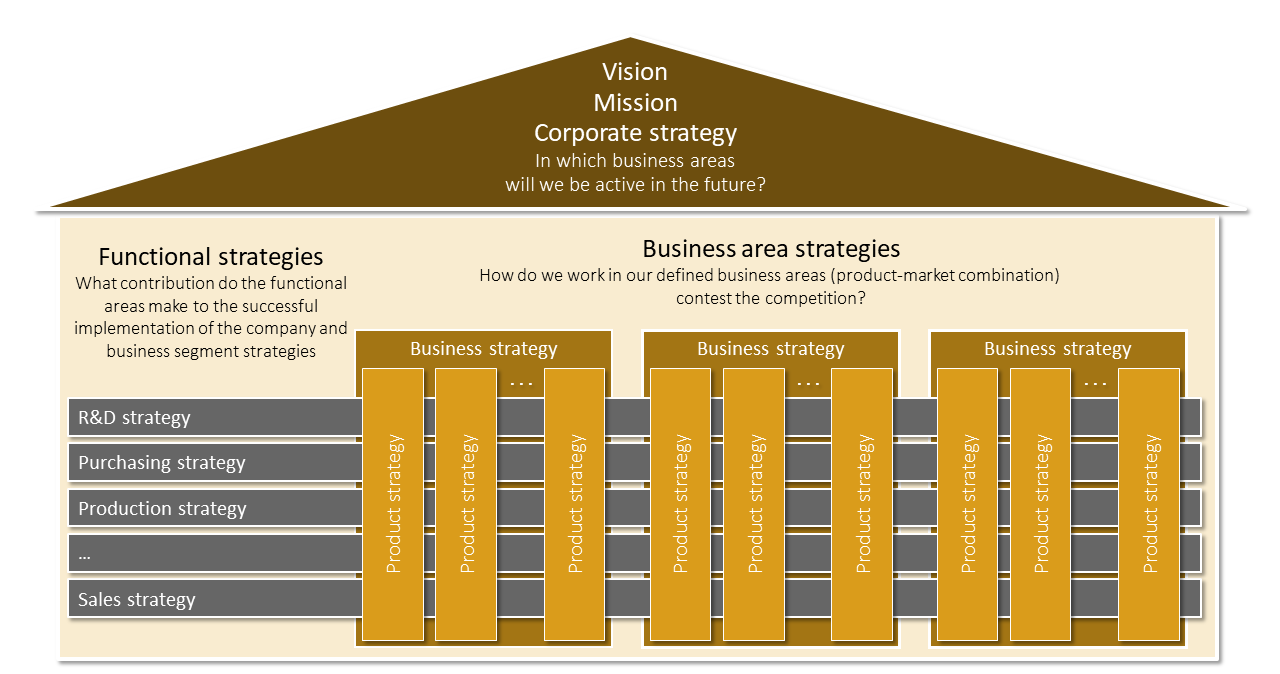Align the strategy
Effective strategies do not originate in the heads of individual top managers. Implementation cannot be done single-handedly by individual divisions. The subject matter is complex and interwoven. A large amount of relevant information must be interpreted correctly and bundled into a coherent, holistic picture, and feasible initiatives must be derived and implemented in close cooperation with those responsible. However, the value of good strategy work only becomes clear when the implementation of strategic initiatives is accompanied by minimal friction, and clear guidelines show both managers and staff the way to go in uncertain decision-making situations – in short: getting everyone to pull together. Are you still a little far away from this? Then start today with your improved strategy work!

The fundamentals of successful strategy work
Many of the foundations for successful strategy work are laid by top management when structuring the company units. Ideally, this is derived from a vision shared by top management. It is underpinned by a mission that gives meaning to the company and is based on the company’s own core competencies. It regulates the business areas in which the company is active and the generally applicable framework conditions. A business segment is defined as a combination of product and market.
Under the company strategy, business segment strategies determine with which success factors like as differentiation or cost leadership and with which products and services the competition should be met.
Functional strategies are laying across the business segments. They focus on maximizing the synergy contribution of the respective departments to the benefit of all business segments.
The business-segment-oriented (vertical) strategies must be neatly aligned with each other on the one hand and also interlinked with the horizontal functional strategies of the departments on the other hand Each business segment strategy as well as functional strategy must be well thought through and neatly formulated, but also be consistent across borders. In addition, all sub-strategies must be derived from the corporate strategy and contribute significantly to the successful implementation.
R&D strategy
Effective and efficient product development requires targeted strategic management. Otherwise, your organisational set-up and processes will lead to unsatisfactory results. To prevent this, you need a functional R&D strategy. It is derived directly from your corporate or business unit strategy and defines how R&D contributes to the implementation of these strategies, as well as what R&D has to offer when concerning the implementation of the other functional strategies. A very important part of this functional strategy is the technology strategy.
These are the most important strategy building blocks that our consultants focus on in customer projects. They are the basis for stable, goal-oriented processes that enable high-performance product creation.
Five tips from practice
- Don’t lose sight of strategy work in the midst of day-to-day business.
- Don’t wait with your own activities until the strategy work at adjacent (or higher) levels is perfect. Use the interactions between the levels to change for the better and look for alliances.
- Strategy does not mean “set in stone for all eternity” – good strategies undergo regular revision and adjustment.
- Obtain external perspectives on the content underpinning key points.
- Make strategies transparent and define clear responsibilities for updating them, as well as for implementing strategic initiatives.
The benefit to you
- You receive a status report and identify with us the path for your logical development going forward.
- You develop a strategy that fits the maturity level of your company.
- You broaden your perspective thanks to content sparring with us.
- You establish valuable alliances with your working partners for the successful implementation of strategic initiatives.
- You benefit from professional change management that renders all measures “irreversibly good”.





